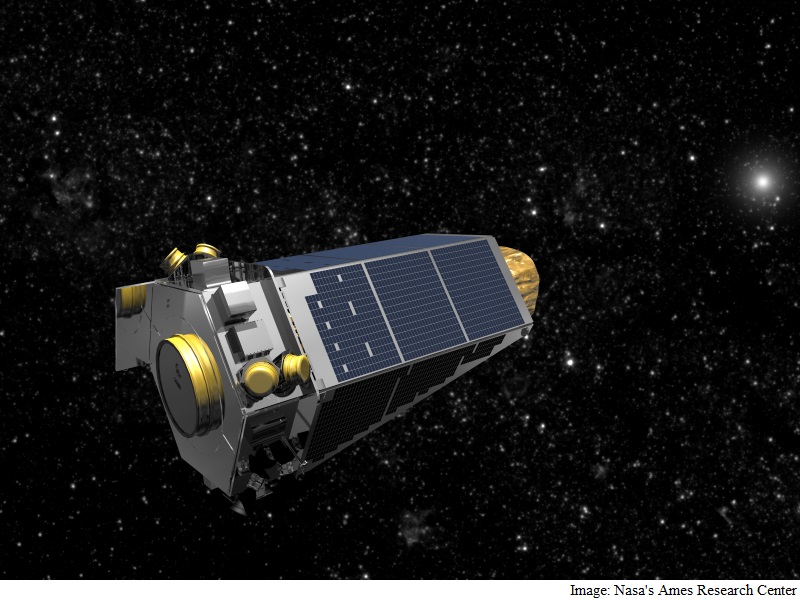- Home
- Science
- Science News
- Nasa Recovers Planet Hunting Kepler Probe From Emergency Mode
Nasa Recovers Planet-Hunting Kepler Probe From Emergency Mode

The spacecraft is now in a stable state with the communication antenna pointed toward Earth, enabling telemetry and historical event data to be downloaded to the ground.
The spacecraft is operating in its lowest fuel-burn mode, the US space agency said in a statement.
The Nasa team has also cancelled the spacecraft emergency, returning the "Deep Space Network" ground communications to normal scheduling.
Once data is on the ground, the team will thoroughly assess all on board systems to ensure the spacecraft is healthy enough to return to science mode and begin the K2 mission's microlensing observing campaign called "Campaign 9".
Earth-based observatories participating in "Campaign 9" will continue to make observations as Kepler's health check continues.
During a scheduled contact on April 7, mission operations engineers discovered that the Kepler spacecraft was in the emergency mode - the lowest operational mode which is fuel intensive.
The mission declared a spacecraft emergency which provided priority access to ground-based communications at the agency's "Deep Space Network".
The spacecraft is nearly 75 million miles from Earth, making the communication slow. Even at the speed of light, it takes 13 minutes for a signal to travel to the spacecraft and back.
The anomalous EM event is the first that the Kepler spacecraft has encountered during its seven years in space.
Kepler completed its prime mission in 2012, detecting nearly 5,000 exoplanets of which more than 1,000 have been confirmed.
The mission had confirmed the first near-Earth-sized planet in the "habitable zone" around a Sun-like star.
In 2014, the Kepler spacecraft began a new mission called K2.
In this extended mission, K2 continues the search for exoplanets while introducing new research opportunities to study young stars, supernovae, and many other astronomical objects.
Among its notable discoveries, K2 has spotted strong evidence of a tiny, rocky object being torn apart as it spirals around a white dwarf star and discovered a new planet orbiting two stars and located within its host stars' "habitable zone", the area around the stars in which life could potentially exist.
It also collected data to reveal that our solar system was born 4.6 billion years ago and only eight percent of the potentially habitable planets that will ever form in the universe existed.
Get your daily dose of tech news, reviews, and insights, in under 80 characters on Gadgets 360 Turbo. Connect with fellow tech lovers on our Forum. Follow us on X, Facebook, WhatsApp, Threads and Google News for instant updates. Catch all the action on our YouTube channel.
Related Stories
- Samsung Galaxy Unpacked 2025
- ChatGPT
- Redmi Note 14 Pro+
- iPhone 16
- Apple Vision Pro
- Oneplus 12
- OnePlus Nord CE 3 Lite 5G
- iPhone 13
- Xiaomi 14 Pro
- Oppo Find N3
- Tecno Spark Go (2023)
- Realme V30
- Best Phones Under 25000
- Samsung Galaxy S24 Series
- Cryptocurrency
- iQoo 12
- Samsung Galaxy S24 Ultra
- Giottus
- Samsung Galaxy Z Flip 5
- Apple 'Scary Fast'
- Housefull 5
- GoPro Hero 12 Black Review
- Invincible Season 2
- JioGlass
- HD Ready TV
- Laptop Under 50000
- Smartwatch Under 10000
- Latest Mobile Phones
- Compare Phones
- Honor Win RT
- Honor Win
- Xiaomi 17 Ultra Leica Edition
- Xiaomi 17 Ultra
- Huawei Nova 15
- Huawei Nova 15 Pro
- Huawei Nova 15 Ultra
- OnePlus 15R
- Asus ProArt P16
- MacBook Pro 14-inch (M5, 2025)
- OPPO Pad Air 5
- Huawei MatePad 11.5 (2026)
- Xiaomi Watch 5
- Huawei Watch 10th Anniversary Edition
- Acerpure Nitro Z Series 100-inch QLED TV
- Samsung 43 Inch LED Ultra HD (4K) Smart TV (UA43UE81AFULXL)
- Asus ROG Ally
- Nintendo Switch Lite
- Haier 1.6 Ton 5 Star Inverter Split AC (HSU19G-MZAID5BN-INV)
- Haier 1.6 Ton 5 Star Inverter Split AC (HSU19G-MZAIM5BN-INV)

















